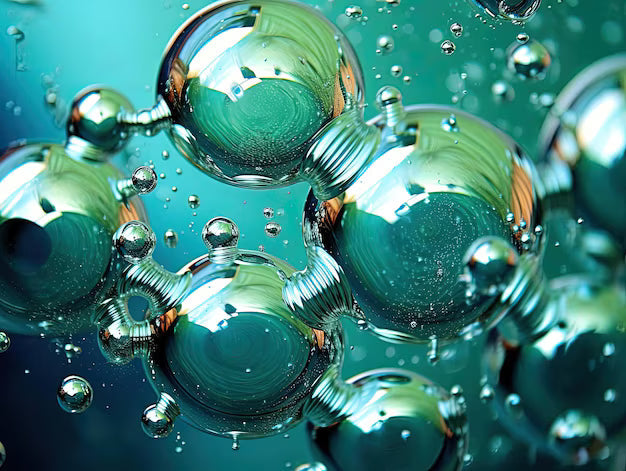Restless Legs Syndrome and EVOO - Blog # 18

Hi Everyone! Welcome to my Friday blog! Today I’m taking a close look at Restless Legs Syndrome (RLS), what causes it and what we can do about it.
What is Restless Legs Syndrome (RLS)? RLS is an unpleasant sensation in the legs (occasionally arms) described as shock-like, burning, throbbing, tightness, itching, aching, tingling, buzzing, crawling or deep tickle or that doesn’t stop causing a strong urge to move one’s legs. Movement only temporarily improves this sensation which generally comes on at rest when relaxing, during quiet-wakefulness, reading, studying or trying to sleep. Limb twitching during sleep as well as quiet-wakeful state is also common. Depending on severity, individuals may have daytime sleepiness, low energy, irritability or depressed mood due to sleep disturbance. The sensation can build to the point constant movement is necessary. Many walk during the night to get relief, resulting in daytime fatigue and sleepiness.
RLS is idiopathic, but is thought to be the result of abnormal use of iron by the brain. Iron insufficiency is the single most consistent finding and environmental risk factor associated with RLS. It is considered a co-morbid condition and is associated with many neurological and endocrine related diseases. These include diabetes, end-stage kidney disease, folate and magnesium deficiencies, alcoholism, spinal stenosis, sleep apnea, ADHD, peripheral neuropathy, radiculopathies, spinal cerebellar atrophy, spinal stenosis, pregnancy, Parkinson’s disease, MS and elevated estrogen levels. ADHD (attention deficit hyperactivity disorder) and RLS both have dysfunctions linked to dopamine. The problem lies in the basal ganglia that uses dopamine to control muscle activity and movement. There appears to be a pre-synaptic abundance of dopamine, but post-synaptic low receptor response. This sounds very much like type 2 diabetes, where the receptors for insulin don’t work like they should. “Imaging studies using special radioactive chemicals have found reduced receptor and transporter function in the brain of more severely affected RLS patients.” This results in low uptake of dopamine into the brain cells resulting in muscle spasms and involuntary movement. Dopamine agonist drugs help relieve symptoms of RLS due to low levels of dopamine. Iron deficiency can lower dopamine levels as well, triggering RLS. Many things worsen symptoms of RLS including medications, smoking, alcohol, being overweight, stress and lack of exercise.
Primary RLS is a slow, chronic problem that begins before age 40 and gets worse with age. Secondary RLS is a sudden onset after age 40 and may occur daily. Secondary RLS is often associated with peripheral neuropathy and with medication side effects. When peripheral neuropathy (affecting 50% of population) is due to lumbar compression of nerves resulting in radiculopathy, decompression or surgery is often recommended. RLS affects up to 15% of the American population with most being female and roughly 60% inherited. Brain autopsies revealed dopamine and iron insufficiency in the substantia nigra (SN) of the brain. This is the same area of the brain affected by Parkinson’s disease. Researchers found a strong relation between severity of RLS and iron concentrations in the SN. Iron deficiency can cause an increase in ROS (reactive oxygen species), mitochondrial dysfunction, reduce dopamine levels and cause abnormal dopamine receptor behavior. Low iron can cause altered neurotransmission, high extracellular dopamine concentration and reduction in dopamine transporter and receptor activity. However, don’t just go out and start taking an iron supplement without talking to your MD. It is crucial to get to the root cause of the iron deficiency! There are also a lot of side effects including nausea/vomiting, constipation/diarrhea and heartburn/abdominal pain. So, what about dopamine?
Dopamine is a neurotransmitter produced in the substantia nigra, ventral tegmental and hypothalamus. It is involved in responses to rewarding experiences, attention, mood and regulation of motor coordination. Dysfunction of this system is a consequence of oxidative stress. Extracellular dopamine can readily become neurotoxic through oxidation. These metabolites are closely associated with the development of Parkinson’s disease.
So, what can we do to combat RLS?
1. Improve dopamine levels - exercise regularly, meditate, get a massage, sleep, listen to music, eat foods rich in Tyrosine (needed to make dopamine) found in almonds, bananas, avocados, eggs, beans, fish and chicken. Some supplements are known to boost dopamine levels (Ashwagandha, rhodiola and panax ginseng). BEWARE: Avoid the ‘dopamine fix’ such as addictive behaviors like nicotine, caffeine and sugar-laden fat-filled treats. These are quite effective at giving us a quick boost, disrupting the natural dopamine production process decreasing dopamine production in the long run.
2. EVOO - Oleic acid and Oleocanthal reduce the neuroinflammatory response, enhance healing and reduce pain. As we know from blog #4, EVOO does a lot to prevent ALzheimer’s disease preventing accumulation of amyloid proteins and neurofibrillary tangles. Since it works directly in the substantia nigra, does it not make sense that it can help restore normal levels of neurotransmitters and normalize function here?
3. Omega 3 - High in fatty fish. Omega 3 is shown to be very beneficial In healing neural damage and reducing pain.
4. Iron - eat foods high in iron to help balance the low iron/dopamine problem. Found in lean meats, nuts, beans, lentils, molasses, dried fruit, dark leafy vegetables. Include more vitamin C rich foods to enhance absorption. Talk to your MD before supplementing.
Until next week, stay healthy my friends!! Drink, drizzle, digest high polyphenol EVOO, eat fatty fish, drink lots of water, get quality sleep, give your gut some pre/probiotics, exercise your body and mind! #EVOO
This blog is intended for informational purposes only. Discuss strategies with your Healthcare Practitioner.







Comments (1)
This very nice blog! and this is very attractive and also gaining attention.
Sleep Apnea Treatment
Sleep Disorder Specialist
Sleep Apnea
Sleep Apnea Test